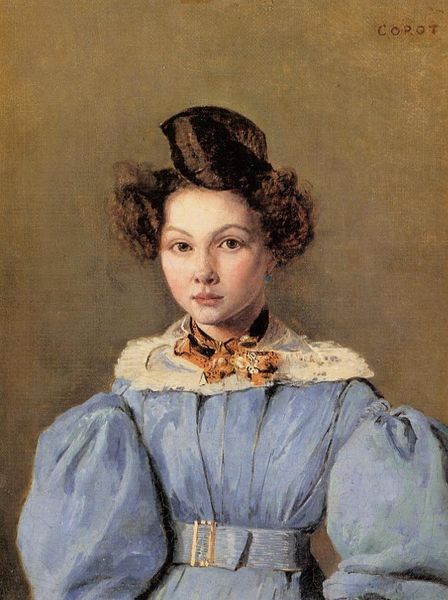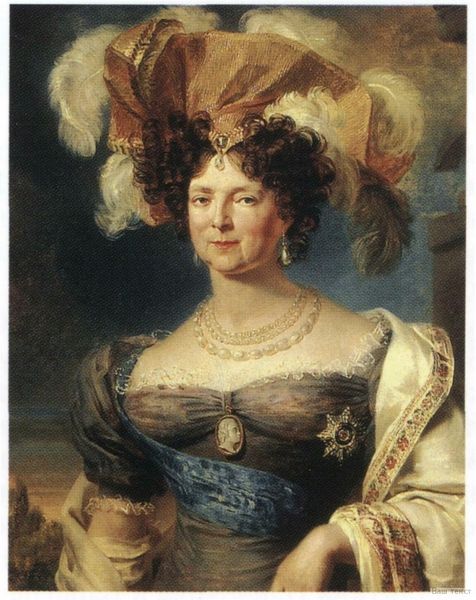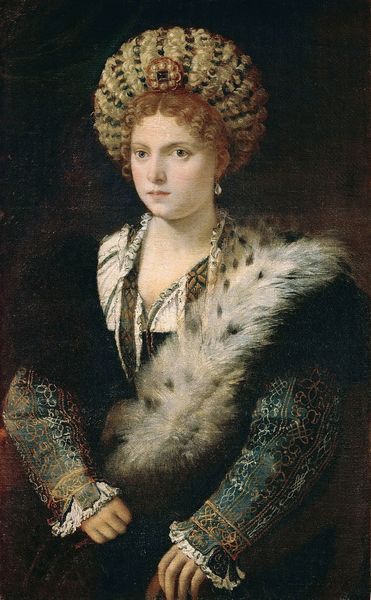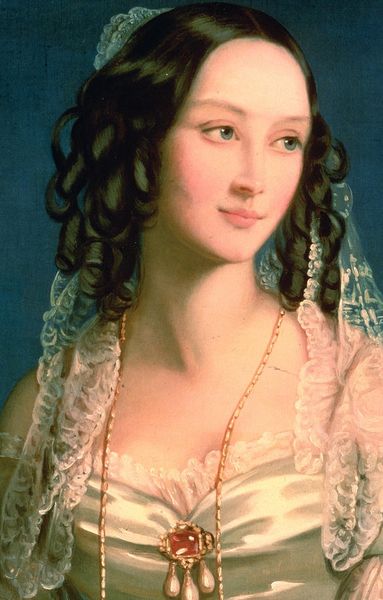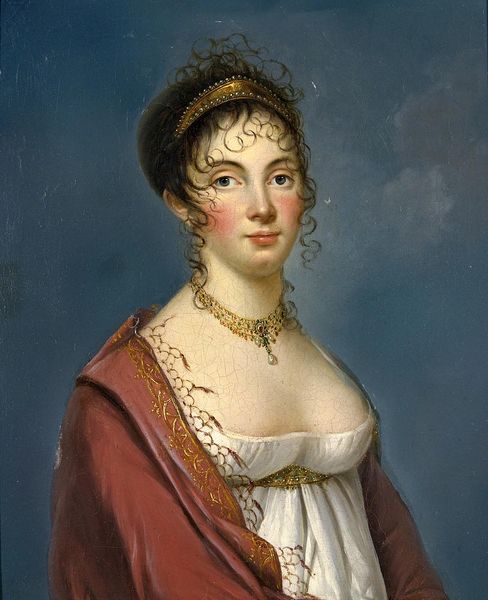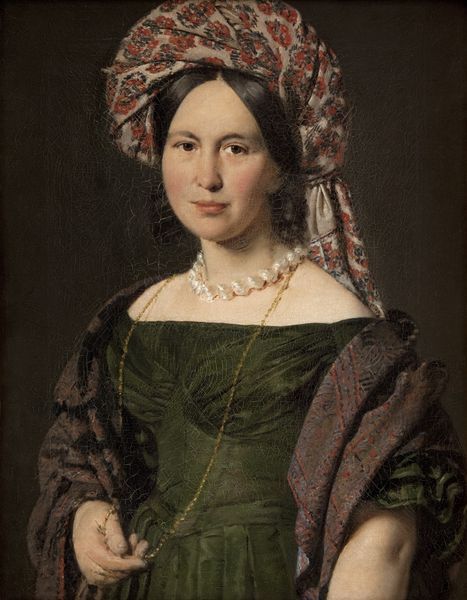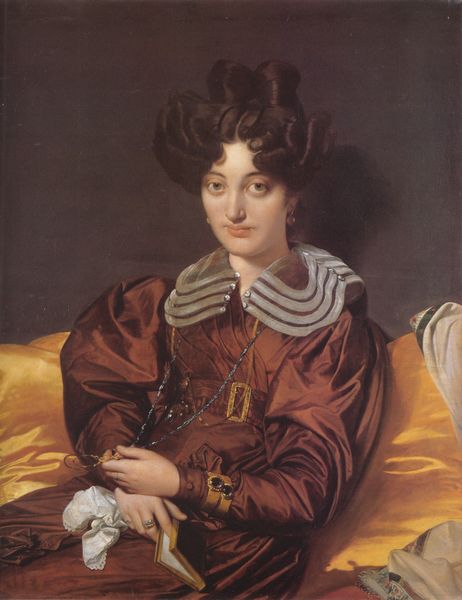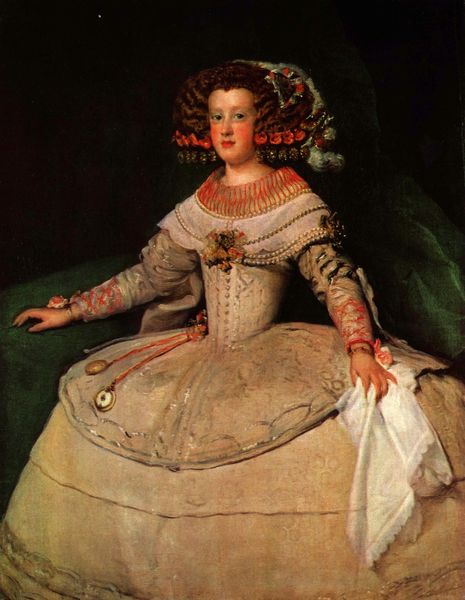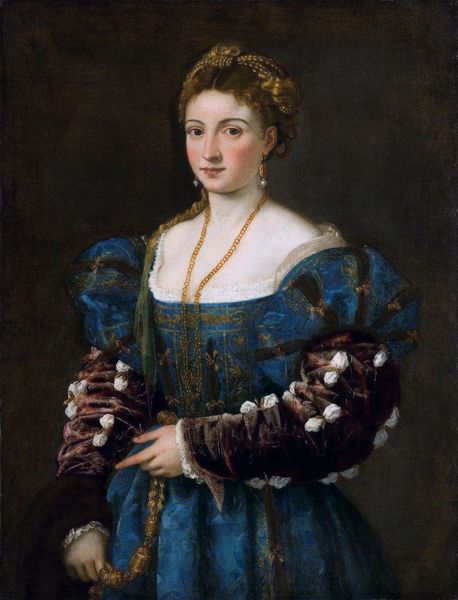
painting, oil-paint
#
portrait
#
painting
#
oil-paint
#
mannerism
#
figuration
#
academic-art
Dimensions: 53 x 67 cm
Copyright: Public domain
Curator: Parmigianino painted "A Turkish Slave" in 1533. Currently, it is held at the Parma National Gallery in Italy. Editor: It’s interesting how serene the subject appears given the loaded title. She looks almost self-possessed, but then the title… it creates a definite tension. Curator: Precisely. The power of the title contrasts quite remarkably with the aesthetic composition of the painting itself. Observe the soft, muted palette – the creamy yellows, the blush in her cheeks. There's a gentle harmony, a sense of visual balance. Editor: A balance achieved through the subtle degradation, I think, in how enslaved persons have been visually and socially rendered, even celebrated. Look at the detailed attention granted to her dress and ornate headdress. Does that detail reflect an accurate representation, or does it betray a more idealized, objectified gaze? Curator: The rendering is undoubtedly idealized, characteristic of Mannerism with its emphasis on elegance and stylized forms. Consider how Parmigianino manipulates light to create a sense of heightened reality – an aesthetic practice rooted in creating a highly mannered representation of humanism, but filtered and amplified to create the 'ideal.' Editor: I'm drawn to that amplification precisely, but I see the subtle ways this style encodes the objectification of this enslaved person, made almost cartoonish through an aesthetic idealization. Her individual plight—and that of so many like her—becomes palatable to the upper classes for whom these paintings were commissioned and made. Curator: These conflicting sentiments reflect a dichotomy typical of art made in the Italian Renaissance: an effort to synthesize form and representation with broader themes that resonate still today. Editor: An effort to which we must add crucial historical contextualization, yes. These artifacts require ongoing dialogue between aesthetics and socio-politics. Curator: I find such intersectional considerations crucial to fostering diverse perspectives through engagement with visual media.
Comments
No comments
Be the first to comment and join the conversation on the ultimate creative platform.

